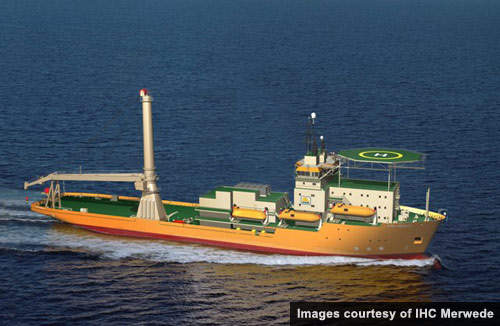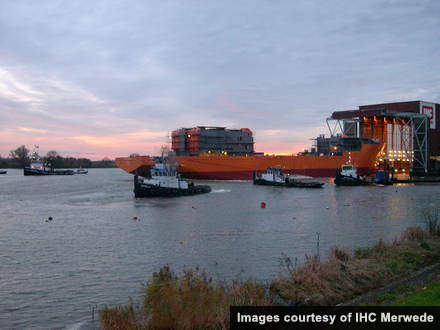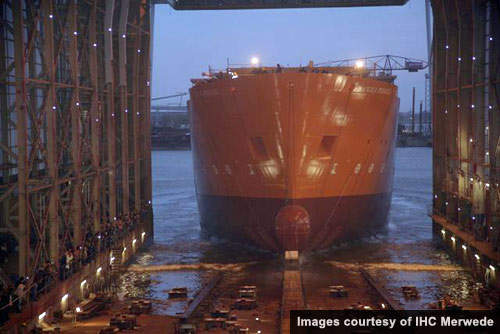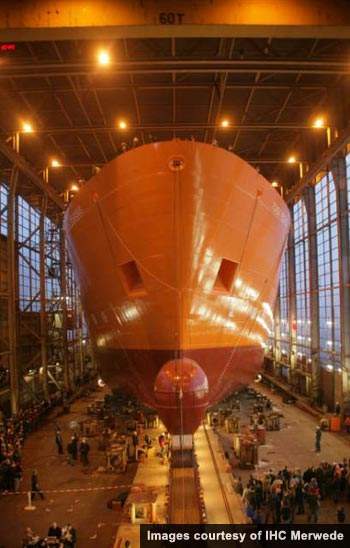The Toisa Pegasus is a diving support and offshore construction vessel built by IHC Merwede for Toisa Ltd of Bermuda (the company has 23 offshore vessels including four saturation diving support vessels).
The Pegasus was built at the Merwede yard in Holland between March 2006, when the contract was won, and November 2007 when the ship was officially launched. After sea trials, the Pegasus was delivered in April 2008. The vessel is being managed and operated by Sealion Shipping, a subsidiary of Toisa. The ship is registered in the UK.
The ship has been built following the protocols of Det Norske Veritas (DNV) and in complies with Maritime and Coastguard Agency, UK.
Ship construction and design
The ship was designed as a fully dynamically positioned construction-class diving support vessel for worldwide operations. The design of the ship is based on Merwede’s Type-22 series, which includes a 22m beam The design is similar to its sister ships Proteus, Polaris and Perseus but features enhanced capability for saturation diving with a state-of-the-art, 18-man twin bell saturation diving system.
In addition, the Pegasus has a flexible under deck arrangement to allow a broad range of equipment to be installed and also a large clear deck area to accommodate contractor applications. The ship adapts to different roles in the charter market and can sail in different geographical areas.
The Pegasus has a total length of 131.7m (432ft), a perpendicular length of 117.7m and a moulded breadth of 22m. The main deck depth is 9.5m and the design draught is 6.25m, while the scantling draught is 6.75m. TThe 1,200m² work deck has strength of five tons per square meter and a deck load of 4000mt. It is 66m long and 21m wide. It is capable of storing about 1,200m3 of fuel and 460m3 of potable water.
Deadweight at design draught is 8,200t while the deadweight at the scantling draught is 9,440t. The offshore crane has a working load of 400t and a radius of 16.5m. The ship has two self-propelled hyperbaric lifeboats and a maximum operating depth of 300m.
Accommodation
The wheelhouse and accommodation facilities in the ship are fully air-conditioned. The ship has 99 berths within 64 cabins. There are currently four captain-class cabins, seven officer cabins, 18 single crew cabins and 35 double crew cabins. The ship also has a hospital and a gymnasium.
Propulsion and power
There are two azimuth thrusters at the aft end of the vessel, each with a power rating of 3,000kW (variable speed drive). There are also two tunnel thrusters at the forward end of the vessel with a power rating of 1,335kW each.
There is a retractable azimuth thruster at the forward end of the Pegasus with a rating of 1,200kW (variable speed drive). The ship, which can make 13kt, also has two active Intering stabilising systems. There are four main generator sets running from diesel engine alternators (720rpm) with an output of 2,970kW (2,980kVA) at a voltage of 690V.
In addition, there are two emergency generator sets (one for dive use and the other for normal use) running from diesel alternators.
The emergency dive generator is rated at 968kW (1,138kVA) with an engine speed of 1,800rpm (440V). The second diesel-powered emergency generator has a rating of 232kW (250kVA) at a speed of 1,800rpm (440V).











